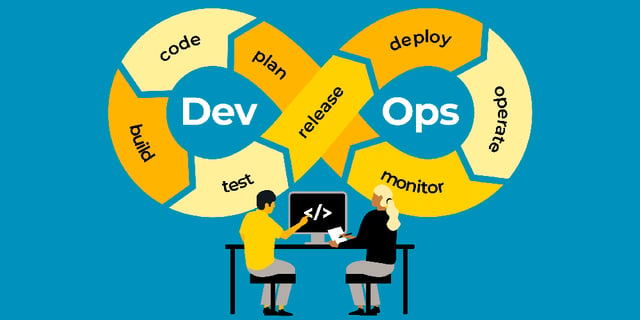Ensuring seamless collaboration between dev, ops, and beyond

Today, effective communication and collaboration between teams are of the greatest importance. However, it's not uncommon to encounter situations where different departments within an organization, particularly the development team and operations, struggle to maintain transparency and open lines of communication.
In this blog post, I will show the risks of poor collaboration and how to mitigate these risks so that your departments can collaborate seamlessly—proven to be a success factor for high-velocity projects and team delivery.
The risks of poor collaboration
First, we need to understand what risks and consequences there are with insufficient collaboration between teams and how severe and far-reaching they are.
If you are lacking coordination between development and operations teams, it can result in frequent service disruptions and downtime.
When changes made in development are not adequately communicated or aligned with operational requirements, it can lead to unexpected outages, leaving customers frustrated, which can damage the reputation of your organization.
Take the infamous Knight Capital Group incident, for example, which in 2012 resulted in a loss of over $460 million due to a software deployment error, showcasing the devastating impact of poor collaboration.
Inadequate communication between development and QA teams can lead to poorly tested software, causing quality issues and compromising the user experience.
When testing is an afterthought rather than an integral part of development, it becomes challenging to catch and rectify issues early in the development cycle.
Without proper coordination, resource allocation can become inefficient, leading to wasted time and effort. Over-provisioned or under-utilized infrastructure resources can strain budgets and slow down development cycles.
When there is no clear interface or communication channel, it becomes hard to assign responsibility for issues. This lack of accountability can result in prolonged resolution times and decreased employee morale.
Mitigating the risks of poor collaboration
As a manager, addressing collaboration gaps is crucial for maintaining service delivery and quality. Here are some strategies to consider:
- Establish clear communication channels: Create well-defined communication channels and processes between development, operations, and other relevant teams.
Regular meetings, status updates, and documentation can help keep everyone informed. - Implement DevOps practices: Embrace DevOps principles to break down silos and promote collaboration. Automation, continuous integration, and continuous delivery (CI/CD) pipelines can streamline development and deployment processes. For example, Netflix's adoption of DevOps practices allowed them to release new features quickly and maintain high service availability.
- Cross-team training: Invest in training programs to help team members understand roles and responsibilities. This can foster empathy and improve collaboration.
- Implement monitoring and feedback loops: Utilize monitoring tools and feedback loops to provide real-time insights into the performance of systems. This helps teams identify and address issues proactively.
Interfaces for seamless collaboration
To facilitate effective collaboration and avoid service disruptions, consider the following interfaces:
- Clearly defined SLAs between development and operations teams, outlining expectations for uptime, response times, and issue resolution.
- Ensure that change management processes are smoothly integrated into the CI/CD pipeline to prevent bottlenecks. Changes should be automatically assessed for compliance with policies and standards, allowing for faster and more efficient deployments.
- Cross-functional incident response teams that include both developers and operations personnel working together to resolve critical issues.
- Shared documentation repositories that provide easy access to system architecture, deployment procedures, and troubleshooting guides.
Bridging the gap between development and operations teams, and fostering collaboration with other departments, is essential to maintain service quality and delivery in today's competitive business environment.
By implementing effective communication channels, embracing DevOps culture and practices, and defining clear interfaces, you can mitigate risks and ensure a smoother, more productive working environment for your organization.
Learning from real-world examples like Knight Capital Group and Netflix can offer valuable insights into achieving seamless collaboration and delivering exceptional service.
Learn more from real-world examples by reading about how a global brand adopted DevOps successfully.
Published:
Updated:


